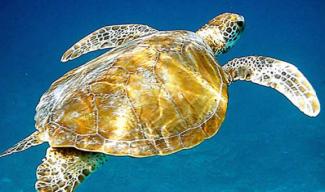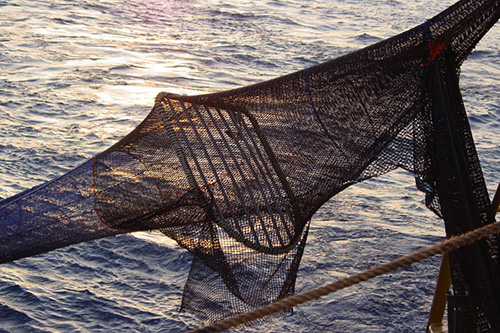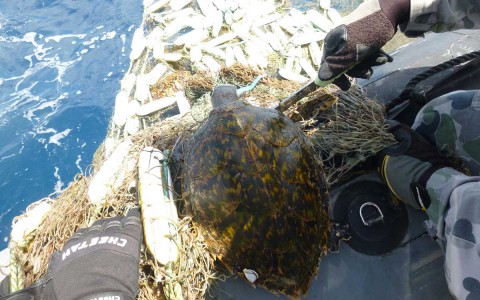
There are six species of marine turtles found in Australian waters and all of them are protected under the Environment Protection and Biodiversity Conservation Act 1999.
Sometimes turtles may interact with fishing boats that use trawl or longline gear.
Biology
Turtles are marine reptiles covered by a heavy shell to protect them from predators. They have lived in the oceans for over 100 million years.
Turtles have beak-like mouths which they use to crush their food. Some turtles are carnivores and eat shellfish, crabs and jellyfish, while others are herbivores and eat seaweeds, sea grasses, sponges and soft corals.
Turtles can live for a long time and are slow growing. They may not start to breed until they are 30 to 50 years old.
Young turtles feed in the open ocean but when they are about five to ten years old they settle near inshore feeding grounds.
Fishing and turtles – how they interact
Turtles may interact with fishing boats that use trawl or longline gear.
An ‘interaction’ is any physical contact a person, boat or fishing gear has with a protected species that causes the animal stress, injury or death. Interactions with turtles can happen when boats are trawling or when the turtle gets caught on a longline hook when trying to eat the bait.
Monitoring interactions
AFMA collects data on interactions with protected species through our monitoring programs.
- Logbooks – All fishers are required to report any interactions they have through their logbooks.
- Observers – Observers are AFMA officers who travel on Australian fishing boats to collect biological data and make environmental observations which contributes to the monitoring of fishing interactions with protected species.
Links
Further information on marine turtles in Australian waters is available on the Department of the Environment and Energy website.
How AFMA and industry minimise interactions
Turtle excluder devices are designed with an escape hole big enough so that turtles can get out of the net if they are accidentally caught. Without these devices, turtles get caught in the net and cannot reach the surface to breathe.
Read more about how turtle excluder devices work.

De-hookers and line cutters are also used to quickly, easily and safely rescue turtles that are accidentally caught on hooks or tangled in lines.

Awareness programs help fishing crews learn how to identify turtle species, how to handle them and how to report any interactions with them.
In some fisheries (such as the Northern Prawn Fishery) an industry code of conduct has been developed and adopted by the fishing industry to minimise interactions with turtles. The code encourages fishers not to trawl near major nesting beaches or fish in areas where turtles are abundant. It also encourages using modified nets that allow large animals to be removed easily.
Protected species that are identified as high risk bycatch species are dealt with through bycatch and discard workplans for each fishery. The workplans are integrated into the management arrangements for each fishery, and are reviewed every 12 months and formally renewed every two years.
Read more about bycatch and discarding workplans.